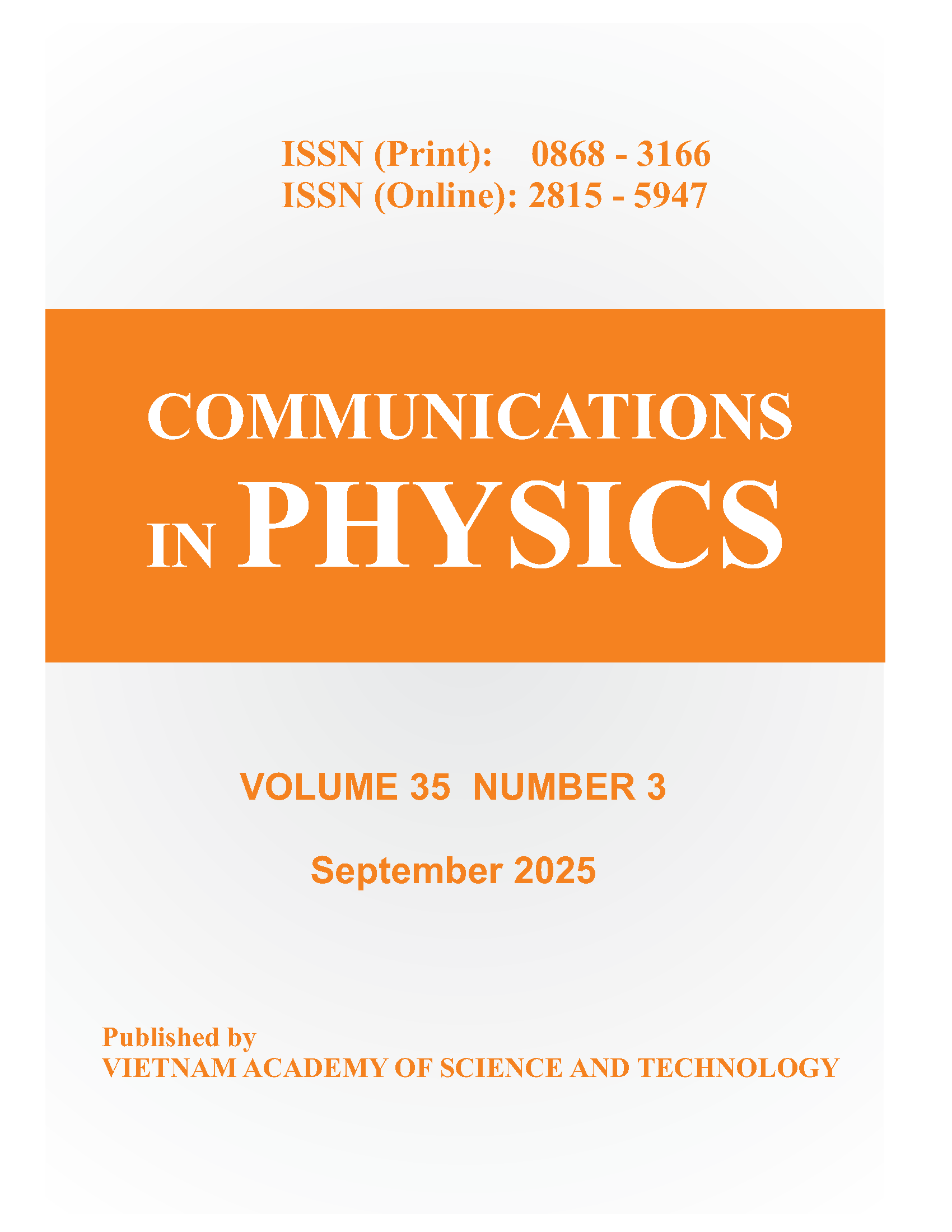Mott Transition in the Mass Imbalanced Ionic Hubbard Model at Half Filling
Author affiliations
DOI:
https://doi.org/10.15625/0868-3166/29/3SI/14265Abstract
The Mott - Hubbard metal - insulator transition in the half-filled mass imbalanced ionic Hubbard model is investigated using the two-site dynamical mean field theory. We find that for a fixed mass imbalanced parameter r the critical interaction Uc increases when the ionic energy \(\Delta\) is increased. In the other hand, for a fixed \(\Delta\), \(U_c\) decreases with increasing the mass imbalance. We also show the existence of BI phase in the system for the case \(\Delta \ne 0\), \(U=0\) and calculate the staggered charge density \(n_B − n_A\) as a function of the interaction for different values of the mass imbalance. Our results in the limiting cases (\(r = 1\); \(\Delta \ne 0\) or/and \(\Delta = 0\); \(r\ne 1\)) are in good agreement with those obtained from full dynamical mean field theory.Downloads
References
M. Lewenstein, A. Sanpera, V. Ahufinger, B. Damski, A. Sen, and U. Sen, Adv. Phys. 56 (2007) 243.
I. Bloch et al.,, Rev. Mod. Phys. 80 (2008) 885.
C. Chin, R. Grimm, P. Julienne, and E. Tiesinga, Rev. Mod. Phys. 82 (2010) 1225.
W. Hofstetter, J. I. Cirac, P. Zoller, E. Demler, and M. D. Lukin, Phys. Rev. Lett. 89 (2002) 220407.
R. J ̈ordens, N. Strohmaier, K. Gu ̈nter, H. Moritz, and T. Esslinger, Nature 455 (2008) 204.
T. Esslinger, Annu. Rev. Condens. Matter Phys. 1 (2010) 129.
A. Hemmerich, D. Schropp, and T. W. H ̈ansch, Phys. Rev. A 44 (1991) 1910.
S. Taie, Y. Takasu, S. Sugawa, R. Yamazaki, T. Tsujimoto, R. Murakami, and Y. Takahashi, Phys.
Rev. Lett. 105 (2010) 190401.
A. Trenkwalder, C. Kohstall, M. Zaccanti, D. Naik, A. I.Sidorov, F. Schreck, and R. Grimm, Phys.
Rev. Lett. 106 (2011) 115304.
C. Kohstall, M. Zaccanti, M. Jag, A. Trenkwalder, P. Massignan, G. M. Bruun, F. Schreck, and R.
Grimm, Nature (London), 485 (2013) 615.
M. Jag, M. Zaccanti, M. Cetina, R. S. Lous, F. Schreck, R.Grimm, D. S. Petrov, and J. Levinsen,
Phys. Rev. Lett. 112 (2014) 075302.
P. Fazekas, Electron Correlation and Magnetism (World Scientific, Singapore, 1999).
P. S. Riseborough and J. M. Lawrence, Rep. Prog. Phys. 79 (2016) 084501.
M. Potthoff, Phys. Rev. B 64 (2001) 165114.
E.A. Winograd, R. Chitra, M.J. Rozenberg Phys. Rev. B 84 (2011) 233102.
T.L. Dao et al.,, Phys. Rev. A 85 (2012) 013606.
Anh-Tuan Hoang, Duc-Anh Le, Physica B 485 (2016) 121.
L. Craco et al., Phys. Rev. B 78 (2008) 075121.
A. Garg et al., Phys. Rev. Lett. 97 (2006) 046403.
.
Downloads
Published
How to Cite
Issue
Section
License
Communications in Physics is licensed under a Creative Commons Attribution-ShareAlike 4.0 International License.
Copyright on any research article published in Communications in Physics is retained by the respective author(s), without restrictions. Authors grant VAST Journals System (VJS) a license to publish the article and identify itself as the original publisher. Upon author(s) by giving permission to Communications in Physics either via Communications in Physics portal or other channel to publish their research work in Communications in Physics agrees to all the terms and conditions of https://creativecommons.org/licenses/by-sa/4.0/ License and terms & condition set by VJS.











